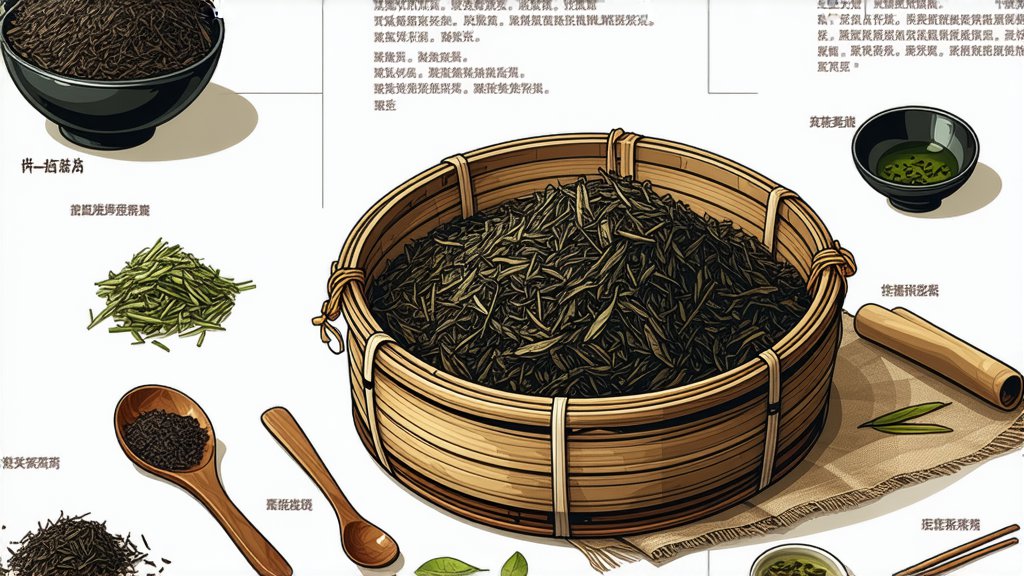
Pu-erh tea, a unique category within the vast spectrum of Chinese dark teas (heicha), stands as a testament to the rich cultural heritage and innovative spirit of China's tea tradition. Originating from the Yunnan province, this remarkable beverage has not only withstood the test of time but has also evolved into a complex and nuanced art form that captivates tea enthusiasts worldwide. In this exploration, we delve into the historical roots, diverse varieties, intricate production methods, and sophisticated appreciation techniques of Pu-erh tea, inviting global readers to embark on a sensory journey through its enigmatic world.
A Glimpse into History
The origins of Pu-erh tea can be traced back to the ancient caravan routes known as the Tea Horse Road, which facilitated trade between Yunnan and Tibet during the Tang Dynasty (618-907 AD). It was along these trails that the unique fermentation process, essential for creating Pu-erh's distinctive flavor profile, began to take shape. Over centuries, the tea gained prominence, particularly among the emperors and nobility, who prized it for its health benefits and refined taste. Today, Pu-erh remains deeply intertwined with Chinese history and culture, symbolizing harmony, longevity, and the art of living well.
Varietals and Characteristics
Pu-erh tea is broadly categorized into two main types: Raw (Sheng) and Ripe (Shou). Each offers a distinct sensory experience, reflecting the different stages of fermentation and aging processes.
-
Raw Pu-erh (Sheng): This variety undergoes natural fermentation over time, allowing its flavors to mature gradually. Fresh Sheng tea exhibits a bright, astringent taste with notes of grass, green beans, and sometimes floral undertones. As it ages, these sharp characteristics mellow, transforming into more complex profiles featuring earthy, woody, and sometimes fruity or spicy notes. The aging process can span decades, with each year adding depth and character to the tea.
-
Ripe Pu-erh (Shou): Unlike Sheng, Shou Pu-erh undergoes a post-fermentation process known as "wet piling" or "wo dui," which accelerates maturation through controlled humidity and temperature conditions. This method results in a tea that is ready for consumption relatively quickly compared to Sheng. Shou Pu-erh typically presents a smoother, mellower taste with rich, earthy flavors often accompanied by hints of dried fruit, chocolate, or even a slight sweetness. Its deep, robust character makes it particularly appealing to those seeking a comforting cup.
Craftsmanship: From Leaf to Cup
The creation of Pu-erh tea is an intricate dance between nature and human ingenuity, encompassing several meticulous steps:
-
Plucking: High-quality Pu-erh begins with the careful selection of tender young leaves and buds from ancient tea trees, preferably those found in the mountainous regions of Yunnan. These leaves are hand-picked following traditional practices to ensure optimal freshness and purity.
-
Withering: After harvesting, the leaves undergo a withering process where they are spread out thinly to lose excess moisture, softening them for subsequent processing.
-
Fixation: The withered leaves are then subjected to high heat in a wok or roller to halt enzymatic activity, preserving their green color and preventing further oxidation. This step also contributes to the development of aroma and flavor precursors.
-
Rolling and Shaping: The fixed leaves are rolled into various shapes, including cakes, bricks, or tuocha (mini compressed balls), which not only facilitate storage and transportation but also influence the tea's aging potential.
-
Fermentation: For Sheng Pu-erh, natural fermentation occurs over time as microorganisms interact with the tea, enhancing its complexity. Shou Pu-erh, however, undergoes the wet piling process, where piles of damp tea leaves are turned regularly to promote uniform fermentation and microbial activity.
-
Drying: Once fermented to the desired degree, the tea is dried to remove any remaining moisture, ensuring stability and longevity.
Appreciating Pu-erh Tea: A Ritual
To truly appreciate Pu-erh tea, one must engage in a mindful tasting ritual that honors its depth and complexity. Here are some guidelines for an authentic experience:
-
Preparation: Start by warming the teapot and cups with hot water to maintain consistent brewing temperatures. Use a Yixing clay pot or a gaiwan for optimal flavor extraction.
-
Leaf to Water Ratio: Generally, 3-5 grams of loose leaves per 100ml of water is recommended, though personal preference may vary.
-
Water Quality: Use fresh, filtered water heated to around 95-100°C (203-212°F) for best results.
-
First Infusion: Rinse the leaves briefly with boiling water to awaken them and discard this initial wash.
-
Steeping Time: Begin with short steeps of about 5-10 seconds, gradually increasing the duration with each subsequent infusion. Pu-erh teas can often be resteeped multiple times, revealing new layers of flavor in each brew.
-
Observation: Pay attention to the tea's aroma, liquor color, mouthfeel, and aftertaste. Sheng Pu-erh typically displays a bright amber hue, while Shou tends towards deeper reddish-brown tones. Note how the flavors evolve throughout the session.
-
Savoring: Sip slowly, allowing the tea to coat your palate fully before swallowing. Reflect on the balance between astringency, bitterness, sweetness, and umami, as well as any unique characteristics imparted by the terroir and aging process.
In conclusion, Pu-erh tea is more than just a beverage; it embodies a philosophy of life that celebrates patience, transformation, and the pursuit of harmony. Whether you're drawn to the vibrant vitality of raw Sheng or the comforting embrace of aged Shou, exploring this enigmatic tea offers a gateway into the profound depths of Chinese tea culture and beyond. So, invite yourself to savor a cup of Pu-erh, let its story unfold on your palate, and embark on a journey that transcends time and space.